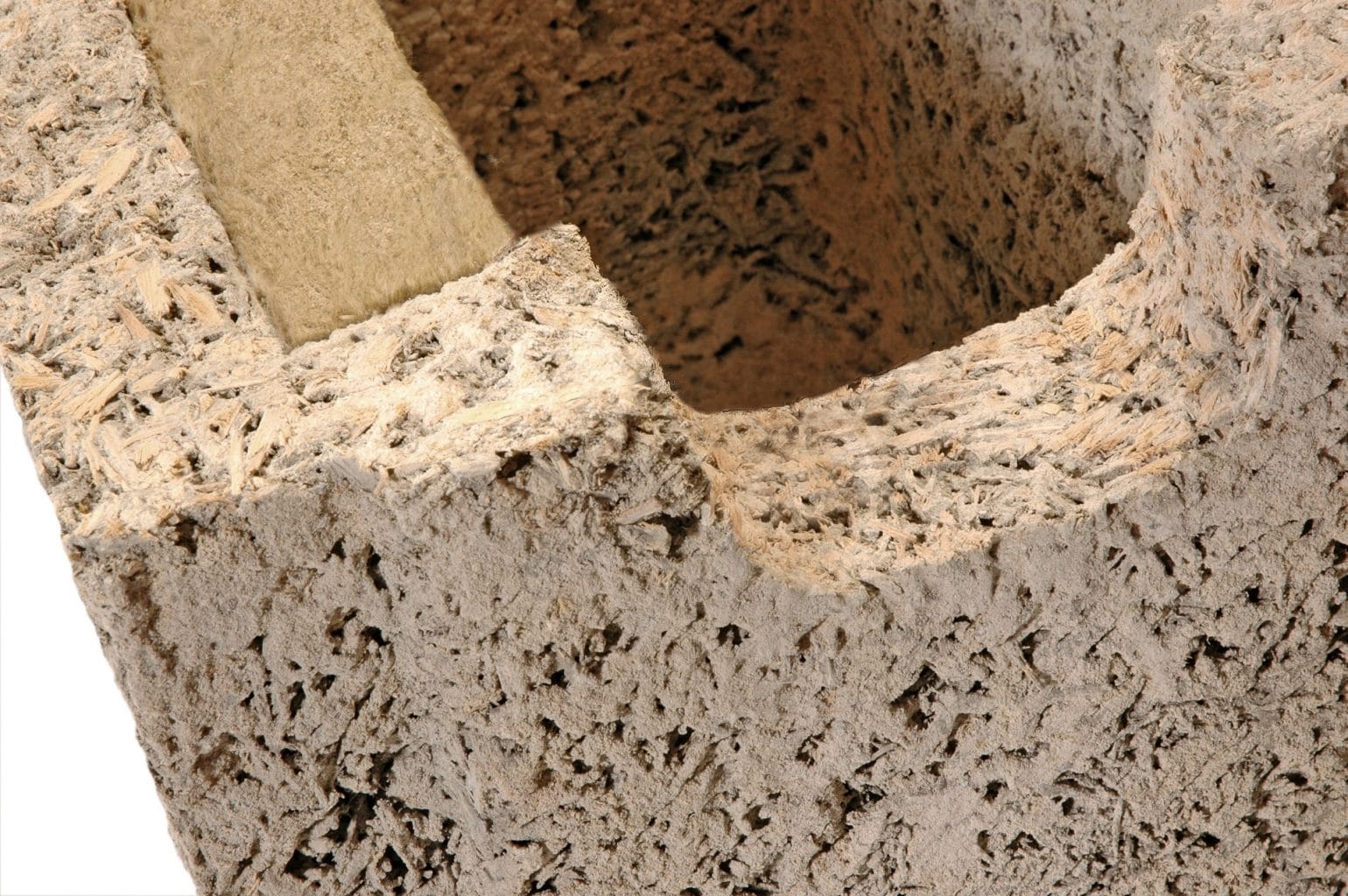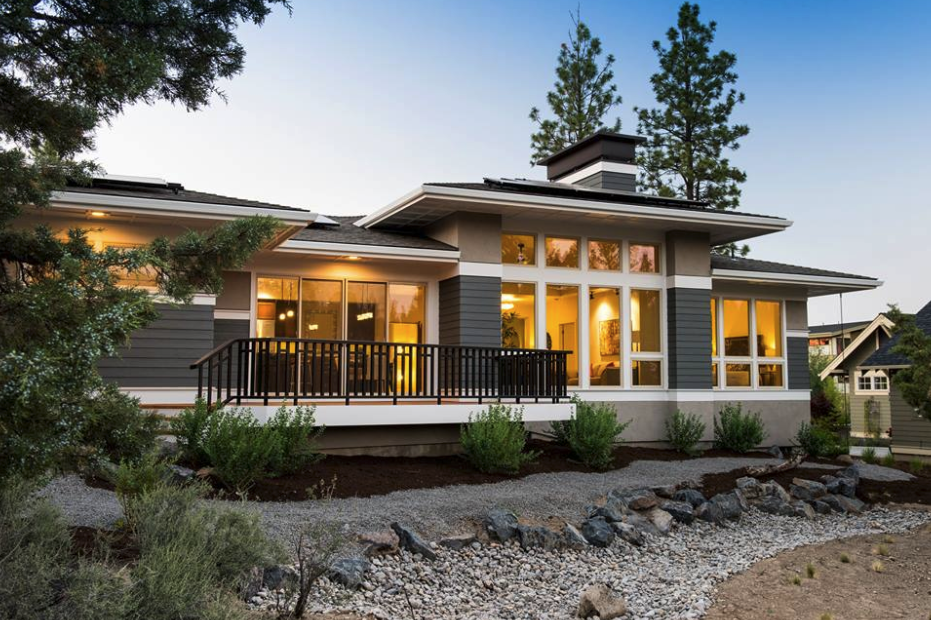The design of a net-zero energy home includes renewable energy sources and energy-efficient materials, like Nexcem as well as other sustainable components like Truegrid Permeable Pavers that reduce the CO2 emissions and water usage over the life cycle of the home. Utilizing both energy-efficient and sustainable building products, along with renewable energy sources, will save homeowners money and help preserve natural resources for generations to come.
What is a Net-Zero Energy Home?

A net-zero energy (NZE) home aims to make enough renewable energy to meet its own annual energy consumption needs. It also lessens the use of critical resources like water, land, raw materials, and energy by utilizing sustainable products and methods. Ultimately, an NZE home saves money while reducing the use of non-renewable energy and other natural resources. To achieve NZE, the design of the home must include continuous insulation (CI), high thermal mass products, energy-efficient roofing, foundation, glazings, sustainable building and home products, and a renewable energy source.
Must-Haves for a Net-Zero Energy Home:
1. Continuous Insulation for a Net-Zero Energy Home

The building envelope of an NZE home requires continuous insulation (CI). The ASHRAE Standard 90.1-2013 defines CI as uncompressed across all structural members without thermal bridges except the service openings and fasteners. Wrapping a building’s envelope with CI improves the effective R-value of the house, and contributes towards an NZE home.
Nexcem, with an R-value of 28, provide CI. Nexcem ICFs also surpass ASHRAE/ANSI 90.1 energy code requirements for thermal resistance and air infiltration. Notably, homes built with ICF exterior walls commonly use 32 percent less energy to cool and 44 percent less energy to warm than similar wood-framed homes.
2. Utilizing High Thermal Mass for a Net-Zero Energy Home
Choosing thermal mass materials for an NZE home’s building envelope can help stabilize temperature shifts within a house by absorbing and storing heat energy.
For example, at night, an ICF home absorbs cool air and stores it within the walls. During the day, these same walls, if protected by an overhang, will stay cool – and so will the interior of the home. In the winter, the ICF home absorbs the sun’s heat energy during the day. Then at night, the stored heat will slowly spread through the wall (conductivity) and release into the home. The influence of the ICF thermal mass reduces the load on mechanical equipment maintaining a comfortable indoor environment.
A high thermal mass product provides an excellent choice for an NZE home. Low thermal mass products, like steel and wood, do not contribute to an NZE building envelope.
3. Sustainable Building and Home Products for an NZE Home
Sustainable building and home products aim to reduce the depletion of critical resources like water, land, raw materials, and energy. Also, durable and sustainable products lessen replacement (and waste) as well as maintenance costs. Several examples of sustainable building and home products that save energy, money and also protect the ecosystem include high-efficiency heating and cooling systems, and ENERGY STAR appliances.
4. Permeable Pavers

Permeable pavers provide an affordable and maintenance-free stormwater control system for home driveways, parking lots, and more. Furthermore, they costs less than concrete and provide more durability than asphalt.
5. The Roof of a Net-Zero Energy Home
The roof assembly and insulation is as important if not more important than the walls and windows of a NZE. Maximizing Insulation and eliminating air leakage are paramount. Choosing colors that reflect more sunlight and absorbs less heat will go a long way to minimizing energy consumption.
6. The Foundation of a Net-Zero Energy Home
The foundation of an NZE home must separate the house from the ground. A continuous layer of rigid foam insulation below the concrete slab foundation provides an effective way to separate a building from the ground. The high thermal mass of concrete holds the radiant energy and keeps a home dry and warm inside; therefore, perfect for the foundation of an NZE home.
7. The Exterior Doors and Windows of a Net-Zero Energy Building Home
An NZE home should include ENERGY STAR certified windows, doors, and skylights appropriate to the home’s climate zone. ENERGY STAR certified windows could reduce energy bills by an average of 12 percent. Higher performance systems such as Internorm windows can reduce energy bills by up to 50% and not only saves money but also reduces greenhouse gas emissions.
In the northern hemisphere, major windows should face south to take advantage of the solar heat gain in winter months when the sun is low. For warmer climates, limit south-facing windows and install shading devices over them. Shading limits excessive heat gain during the hotter months of the year.
8. Renewable Energy Sources of a Net-Zero Energy Home
The design of an NZE home should aim to create as much energy as it uses by installing a renewable energy source such as wind systems, solar photovoltaic (PV) panels, small “hybrid” electric systems, or microhydropower.
In 2018, wind and solar power provided most of the renewable energy in the United States. In fact, the two represented 10 percent of the country’s total electricity production – employing over 353,509 workers with annual wages of over $60,000 (wind turbine and solar technicians). The U.S. Energy Information Administration predicts wind and solar power could reach 11 percent in 2019, and in 2020, 13 percent of the total electric output. By contrast, they predict coal power will drop to 23 percent by 2020, down from 39 percent as recently as 2014.
Building a high-performance NZE home can reduce the PV design requirements to achieve net zero. Renewable energy sources can reduce or even eliminate a home’s utility bills, and some may also provide tax incentives.
Why Build a Net-Zero Energy Home?

Homeowners wanting to save money on utilities and also preserve the health of the environment should consider building a net-zero energy home or a net-zero ready home. A net-zero energy home saves money and energy for the life cycle of the home by making enough renewable energy to fulfill its yearly energy requirements. Also, an NZE home strives to care for the ecosystem by implementing methods and designs that use durable and sustainable products that lessen waste, and replacement costs, and minimize the use of non-renewable natural resources, like water, energy, land, and raw materials.
Please contact Nexcem professionals for more information on building a net-zero energy home.

